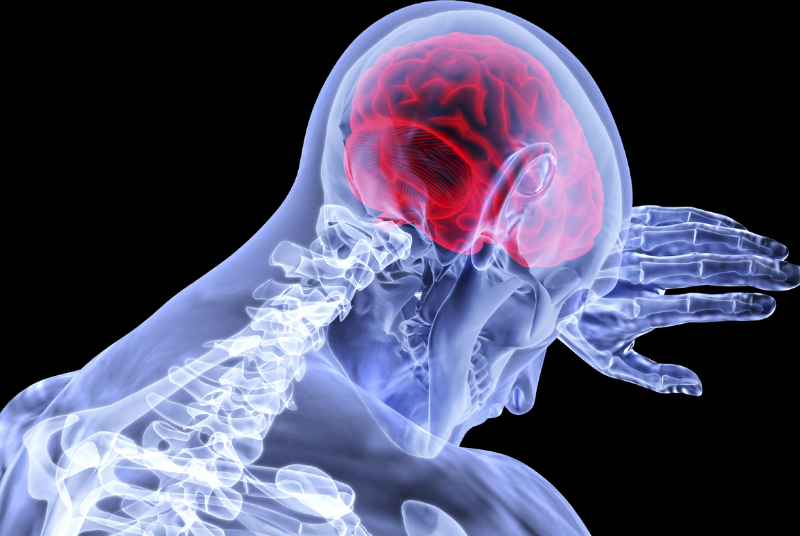Photo by VSRao
Strokes may cause temporary or permanent disabilities, depending on how long the brain lacks blood flow and which part is affected. Age and race are risk factors, and men tend to have strokes more often than women. Other risk factors include a history of tobacco use, high blood pressure, high cholesterol and fats in our diet, obesity, excessive alcohol use, illegal drugs like cocaine and methamphetamine, and uncontrolled diabetes and sleep apnea. Strokes are always medical emergencies, and although fewer people die from strokes than in the past, early treatment can reduce the severity and length of impairment. As with most medical conditions that may produce chronic disability, prevention is the key. Understanding and doing something about any risk factors that may be present and maintaining a healthy lifestyle go a long way in risk management.
The following is derived from the
Handbook of Health and Behavior: Psychological Treatment Strategies for the Nursing Home Patient
Joseph M. Casciani, PhD
This is part of a series where Dr. Casciani makes you aware of and informs you about series medical conditions your patient or loved one may be facing.
A more detailed, clinical, and complete description can be found in the handbook.
Medical Condition – STROKE
A stroke is damage to part of the brain caused by interruption of the blood supply. A stroke causes loss of function in the part of the body that is controlled by the damaged part of the brain. Only one in three stroke victims recovers completely. Another one in three suffers permanent disability, and the remaining third are killed by the stroke. Stroke is rare before age 60 but increasingly more common thereafter. The risk of stroke is higher in people whose relatives have had strokes.
What is a transient ischemic attack (TIA)?
“Transient” means temporary. “Ischemic” means an insufficient supply of blood. A TIA is a “mini stroke” caused by a temporary shortage of blood to the brain that results in symptoms of a mild stroke, such as loss of speech, movement, feeling, or vision. The symptoms may last for only a few minutes or may continue for up to 24 hours. An attack that lasts more than 24 hours is considered a stroke. One-quarter to one-third of TIAs are followed by a stroke within five years. People who have had a stroke risk having additional strokes if the underlying causes are not eliminated.
What are the symptoms of a stroke?
• severe headache, dizziness, confusion, unconsciousness, coma, death
• slurring or loss of speech, difficulty in understanding speech
• weakness, paralysis, or numbness in the face, arm, or leg on one side of the body
• visual disturbances
• loss of bladder or bowel control
Which medical conditions increase the risk for stroke?
High blood pressure (hypertension) puts strain on the walls of the arteries and increases the risk for stroke. It may be possible to lower high blood pressure by dietary changes, weight control, exercise, relaxation, and stress reduction. Medication may also be required, however. Narrowed arteries due to atherosclerosis and high blood cholesterol (hypercholesterolemia) can also be helped by a low-fat, low-cholesterol diet and, if necessary, by cholesterol-lowering drugs.
Heart conditions can both cause and be caused by blood clots, but medication is available to thin the blood and reduce clotting. Adult-onset diabetes can be controlled by diet and, if necessary, can be treated with medication.
What are the Medical Consequences of a Stroke?
Depending on nature and severity of stroke, these changes may occur: numbness or weakness; difficulty with either or both receptive and expressive communication; anxiety and depression; sensory losses; difficulty with gross and fine motor coordination; reduced mobility; paralysis and weakness; pain; falls and collisions; cognitive losses; difficulty regulating emotions; risk of recurrent stroke, and elevated anxiety levels secondary to this; difficulty with meals, including chewing and swallowing problems; loss of self-care skills.
What are Contributing Factors?
Lack of exercise (a sedentary lifestyle) increases the risk for stroke. Regular exercise reduces the risk by lowering both blood pressure and blood cholesterol, helping control weight, and improving blood circulation. Both smoking and heavy use of alcohol increase the risk for stroke. Being overweight strains the heart, is a major cause of adult-onset diabetes, and increases both blood pressure and blood cholesterol. Anxiety level, depression, stress, and difficulty managing anger can also be risk factors for stroke.
For Professionals – Themes And Strategies in Behavioral Treatment can be found in the Handbook.

